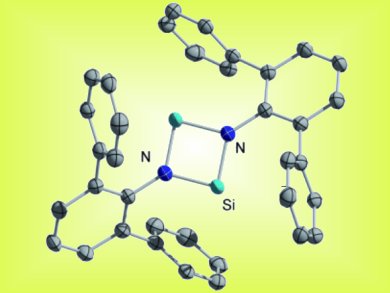A. J. Meixner et al. describe in a Review how light microscopy with doughnut modes enables the detection, characterization, and manipulation of single nanoobjects. What can life, materials, and applied sciences learn from this form of laser light microscopy? The hydrated electron is the topic of a Minireview by K. R. Siefermann and B. Abel. The Highlights deal with the folding of conjugated polymer chains (F. A. Feist and T. Basché), ultrafast microscopy of microfluidics (E. Paciok and B. Blümich), and mass spectrometry as a bridge between gas-phase and solution chemistries (F. Coelho and M. N. Eberlin).
In the Communications section, E. J. M. Hensen et al. demonstrate that supported rhodium oxide nanoparticles can act as highly active CO oxidation catalysts. X. Tong et al. succeeded in an asymmetric synthesis of dihydropyrans through the enantioselective annulation of allenoates and oxo-dienes. G. Frenking et al. present the first base-free disilylene with two-coordinate silicon atoms: a stable dimeric silaisonitrile (see picture).


